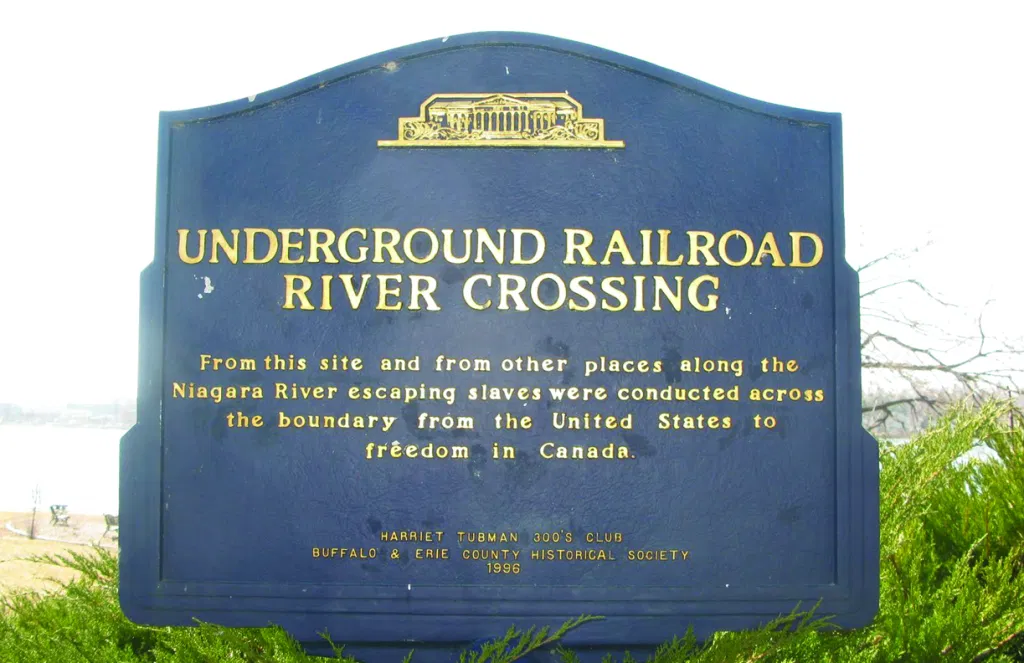Learn about Freedom Seekers and the Underground Railroad in this free Great Lakes-focused curriculum
‘Freedom Seekers’ curriculum teaches students about connections between the Underground Railroad, Great Lakes and science.

Did you know that Freedom Seekers were also environmentalists and naturalists who learned to navigate the land as they attempted to escaped slavery?
To help educators and students learn about Freedom Seekers and their journey on the Underground Railroad, partners developed this free middle and high school curriculum, Freedom Seekers: The Underground Railroad, Great Lakes, and Science Literacy Activities. The lessons acknowledge the enslaved Africans who had to rely on environmental science principles in their quest for life, liberty and the pursuit of happiness.
The Freedom Seekers curriculum project is a collaborative effort between several organizations and schools throughout the Great Lakes. It is part of a professional development effort for educators to increase their knowledge of the Great Lakes and environmental issues while incorporating Environmental Justice Education (EJE) approaches to K-12 teaching. These EJE approaches leverage cross-curricular connections that focus on increasing the awareness of local issues and history in the Great Lakes region. These lessons introduce an innovative approach to engage students in place-based learning, by discovering their local history with the Underground Railroad and its connection to the Great Lakes.
“These activities are meant to be a launching point for students to continue to engage in robust, well-rounded conversations about the Great Lakes, an area with rich environmental resources and cultural history,” said Monica Miles, former coastal literacy specialist for New York Sea Grant (now Chief Diversity Officer of Equity and Inclusion with the Physician Assistant Education Association) and the person responsible for dreaming up this project. In an episode of the podcast, Teach Me about The Great Lakes, Miles explains m ore in depth about the importance of EJE and the connections made in the curriculum and also why it was so important to embark on an endeavor to educate youth about the history that is connected to the land we occupy.
ore in depth about the importance of EJE and the connections made in the curriculum and also why it was so important to embark on an endeavor to educate youth about the history that is connected to the land we occupy.
“I didn’t realize that the Great Lakes were linked to the Underground Railroad at all,” said Megan Gunn, aquatic education specialist with Illinois-Indiana Sea Grant and Purdue University Forestry and Natural Resources. Gunn worked with partners across the region to finalize these resources. “I grew up near Lake Michigan and never learned how my cultural roots were so closely connected to the natural world, so I’m excited for the next generation to have this educational opportunity.”
This curriculum was designed and assembled by many partners across the Great Lakes basin including Sea Grant programs in New York, Michigan, Illinois-Indiana, and Wisconsin, along with New York State Department of Environmental Conservation, Buffalo Niagara Waterkeeper, University at Buffalo, Niagara Falls City Schools, the Park School at Buffalo, and other partners. A collaboration through the Center for Great Lakes Literacy (CGLL) education network, this curriculum resource was designed for educators across the Great Lakes basin (and even beyond) and is aligned with the Great Lakes Literacy Principles. These lessons also highlight how the Great Lakes support a broad diversity of life and ecosystems (Principle 5); how the Great Lakes and humans in their watersheds are inextricably interconnected (Principle 6); how much remains to be learned about the Great Lakes (Principle 7) and how the Great Lakes are socially, economically, and environmentally significant to the region, the nation and the planet (Principle 8).
“We are excited to offer this curriculum through the Center for Great Lakes Literacy network,” said Meaghan Gass, Michigan Sea Grant Extension Educator and CGLL network partner. “Using Google Docs, we hope it will be easy for educators to integrate this content into their classroom – either in-person or virtual – this school year, and we hope students enjoy learning more about Freedom Seekers and helping to share their story in the Great Lakes basin.”
Illinois-Indiana Sea Grant, Michigan Sea Grant, and New York Sea Grant help to foster economic growth and protect coastal Great Lakes resources through education, research and outreach. Illinois-Indiana Sea Grant (collaborative effort of the University of Illinois and Purdue University), Michigan Sea Grant (collaborative effort of the University of Michigan and Michigan State University and its MSU Extension) and New York Sea Grant (collaborative effort of the State University of New York (SUNY) and Cornell University) are part of the NOAA-National Sea Grant network of 34 university-based programs.
Learn about Freedom Seekers and the Underground Railroad
- Link to view the free curriculum ▶ Google Document | PDF
- Link to edit and use curriculum
Curriculum topics include:
This article was prepared by MSU Extension educator Meaghan Gass, Purdue University recruitment and outreach specialist Megan Gunn, and former Cornell University Coastal Literacy Specialist Monica Miles under award NA180AR4170102 from the National Oceanic and Atmospheric Administration, U.S. Department of Commerce through the Regents of the University of Michigan. The statements, findings, conclusions, and recommendations are those of the author(s) and do not necessarily reflect the views of the National Oceanic and Atmospheric Administration, the Department of Commerce, or the Regents of the University of Michigan.



 Print
Print Email
Email




